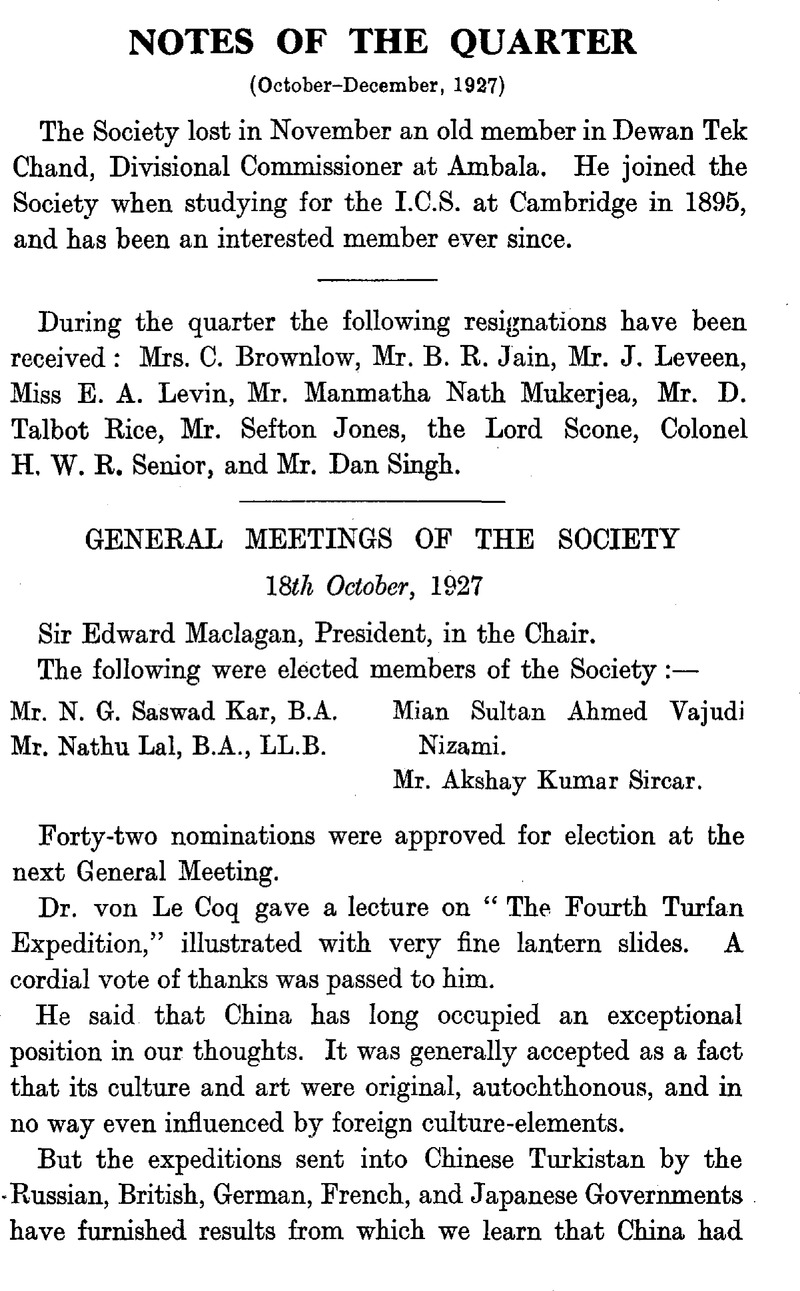No CrossRef data available.
Published online by Cambridge University Press: 15 March 2011

page 233 note 1 Albírúní's, India (, Sachau's translation), vol. ii, p. 102Google Scholar.
page 233 note 2 Gardézí, , Zainu'l-Akhbár (King's College, Cambridge, MS.213)Google Scholar, fol. 126a, and Farrukhi, Díwán (India Office MS. No. 1841), fol. 19b.
page 233 note 3 Vol. iv (Cairo ed.), p. 15.
page 233 note 4 Albírúní, ib., p. 104.
page 234 note 1 Akhbáru'd-Duwalu'l-Munqati'ah (Br. Mus. Or. 3685), fol. 150b.
page 234 note 2 Mirátu'z-Zamán (Br. Mus. Or. 4619), fol. 214a.
page 235 note 1 Albírúní, ib., p. 105.
page 235 note 2 Indian Antiquary, vol. xxvi, p. 126.
page 235 note 3 Farrukhi, ib., fol. 19a.
page 236 note 1 Gazetteer of Marwar, Mallani, and Jaysulmere, by Walter, C. K. M., pp. 84, 96Google Scholar; and Imperial Gazetteer, Provincial Series, Rajputana, , pp. 209–10Google Scholar.
page 236 note 2 Bombay Gazetteer, vol. v, p. 282. It is about 17 miles north of Palanpur.
page 236 note 3 Burgess, Jas., Archœological Survey of Western India, vol. ix, p. 71Google Scholar.
page 236 note 4 Ibn Ẓáfir, Akhbáru'd-Duwalu'l-Munqati'áh, ib., fol. 150a.
page 236 note 5 Mirátu'z-Zamán, ib., fol. 215a.
page 236 note 6 Kanthkot is 16 miles south-west from Rao and 36 miles from Anjar.
page 237 note 2 The Sulṭán could not have stayed longer.
page 237 note 3 Farrukhí, ib., fol. 20a, gives a long description of it.
page 237 note 4 This name is mentioned only by Farrukhí, ib.
page 238 note 1 Sir E. C. Bayley in his translation of the Mirá't-i-Aḥmadí, has tried to prove that there is nothing unusual in the story about Dábishlím, but obviously he had not taken into consideration the overwhelming historical evidence against it.